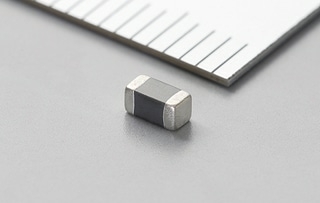source: Murata news
Murata Manufacturing Co., Ltd. introduces the BLM31KN_BH series of 1206-inch (3.2 x 1.6mm) chip ferrite beads for supplying power with guaranteed usage at 150°C for automotive powertrain safety applications.
This product was designed primarily for automotive applications, for use as a noise suppression component of power lines circuit installed in automotive engine rooms and LED headlights which require guaranteed usage at high temperatures. Mass production of the product has already started.
In today’s automotive applications, there is increasing need for noise suppression in order to counteract rising conductive noise and radiation noise resulting from the development of motorization of various functions, including hybrid and electric cars.
As an example, the number of motor circuits installed in motor control circuits (with a brush) or inverter circuits (brushless) has increased with the motorization of powertrains, requiring noise suppression components which are capable of dealing with large currents. Furthermore, in order to reduce vehicle weight, which is directly related to fuel economy improvement, the electronic control units (ECU) of engine systems and safety systems tend to be located in engine rooms which reach high temperatures (mechatronic design), requiring noise suppression components used in ECUs that are also guaranteed to work at high temperatures.
Murata has realized a product that supports large currents suitable for power lines (120ohm/4A at 125°C) by devising design specifications for internal and external electrodes that can also be used in environments of 150°C at a size of 1206 inches. Murata will continue to focus on development of noise suppression designs for these power lines.
Features
- Conforming to AEC-Q200*1
- Available within the range of -55°C to 150°C (with derating*2 of the rated current)
- Small size (3.2 x 1.6mm) capable of dealing with large currents of up to 4A
- Impedance up to 1000ohm (at 100MHz) is effective for noise suppression.
Terminology
*1 AEC-Q200
Reliability testing standards required for automotive electric components and established by the Automotive Electronics Council
*2 Derating of the rated current
A 150°C guaranteed product determines the rated current at ambient temperatures of 125°C and 150°C and guarantees the specifications and reliability in environments of 150°C.
Derating image



































